Geislinger Str. 2 (in place of the demolished house no. 3)
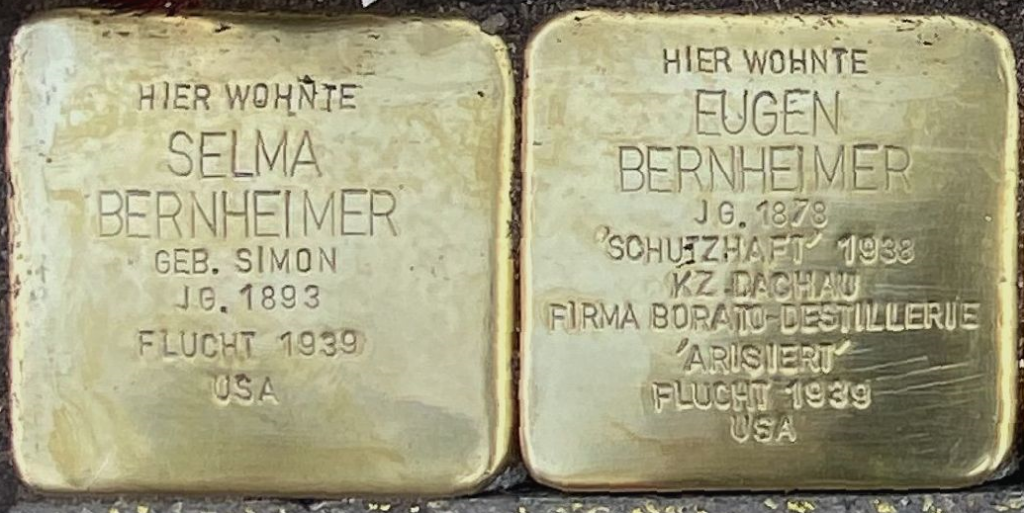
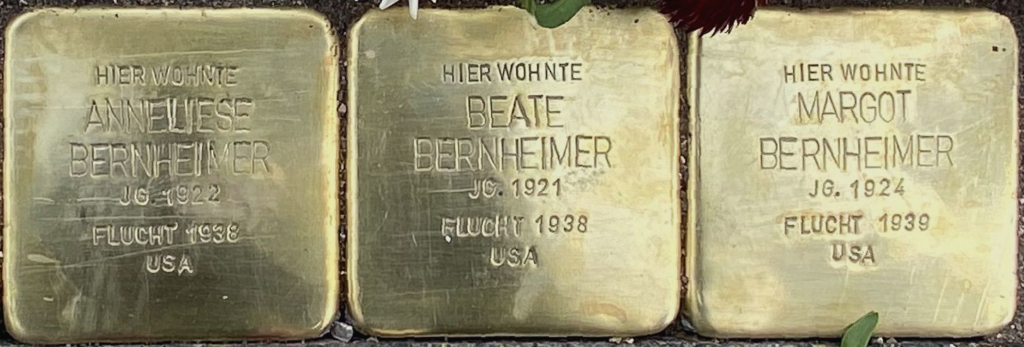
The Bernheimer family
Eugen Bernheimer’s ancestors (great-great-grandparents) had moved from Illereichen, not far from Memmingen, to Jebenhausen in 1778, where Jewish settlers had been able to settle for a year under the protection of the Liebenstein local lordship. The Bernheimer family thus belonged to the long-established Jewish families in the village, a distinction that was also important after the move to the town of Göppingen. Eugen Bernheimer’s parents Berta and Jakob Bernheimer founded a company in Jebenhausen in 1857 as ‘Branntwein- und Cigarrenhandel en gros’ but moved to Göppingen as early as 1864.
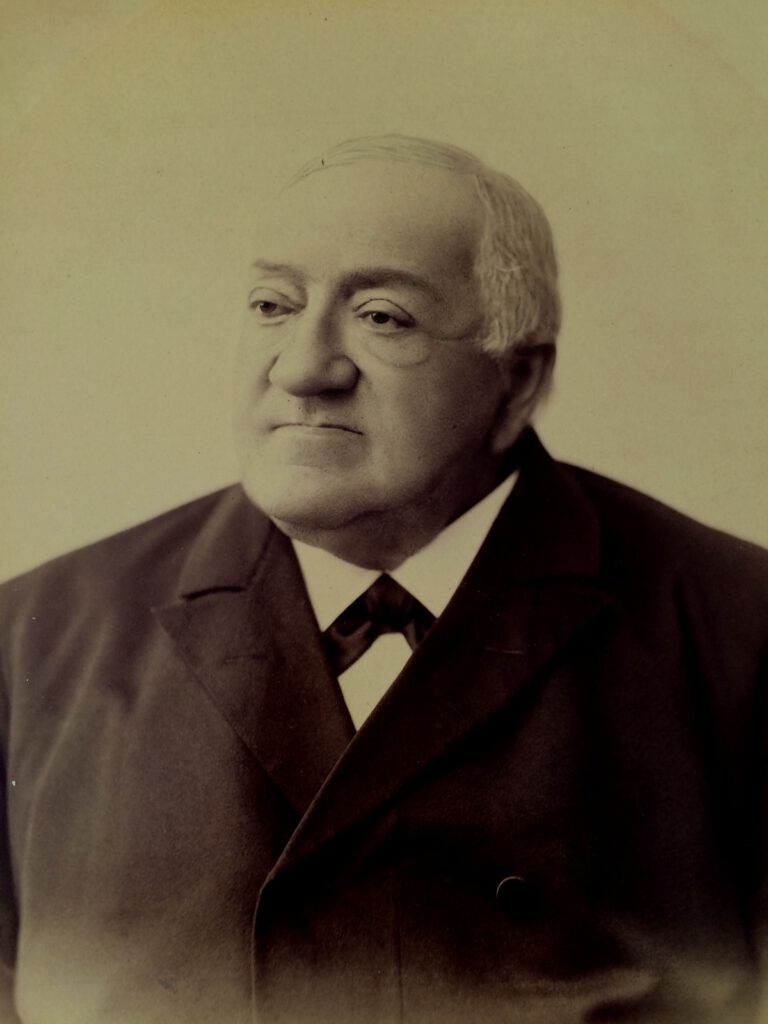
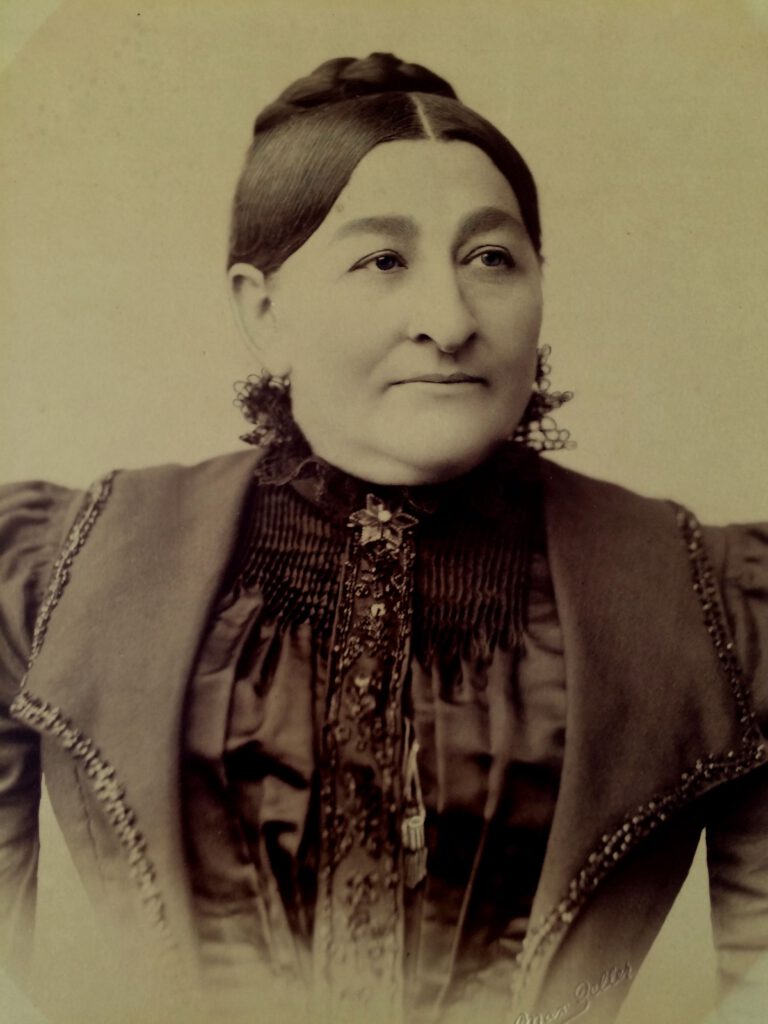
Here Jakob Bernheimer acquired the former restaurant ‘Zum Löwen’ with surrounding property in Gartenstraße 3, and at times probably also the neighboring house no. 2. The first floor of no. 3 was used for the business premises, the large family lived on the second floor, the second floor was rented out. ‘Large family’: Berta and Jakob Bernheimer had 13 children, three of whom died at birth. Eugen Bernheimer (1878 – 1970) was the youngest of the surviving children. Apart from him, only his sister Leonore (1856-1905), who was 22 years his senior and married the musician Heinrich Frei (1846-1923) in Munich, had any descendants.
A lodger who later became prominent lived in the Bernheimer house in 1890/91: the young Hermann Hesse, winner of the Nobel Prize for Literature in 1946. While attending the Göppingen Latin School, he lived as a lodger with the widow Schaible in the Bernheimer house.
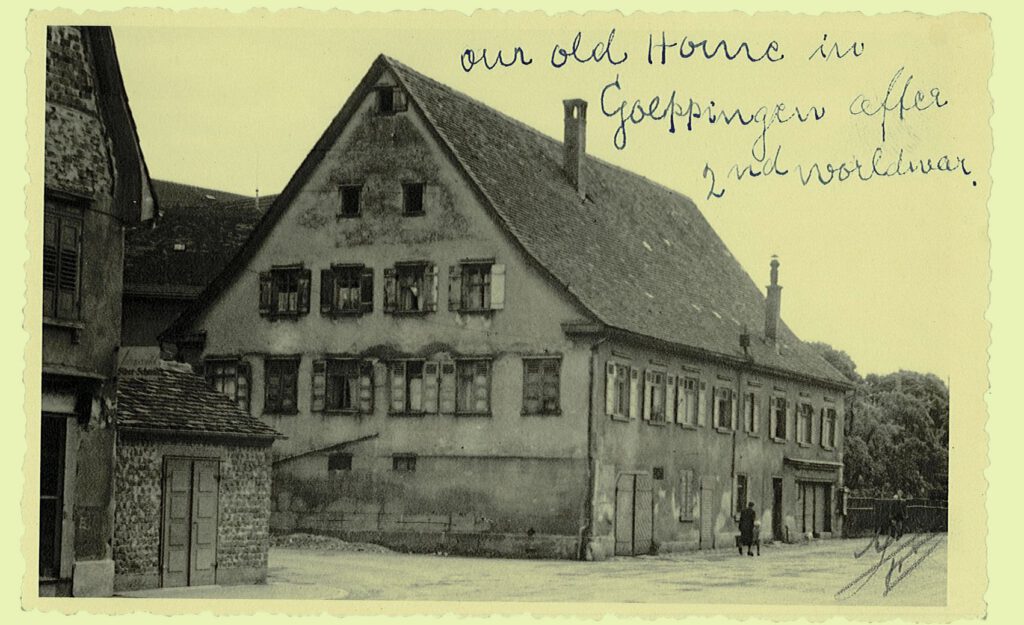
Further prominence came from Eugen Bernheimer’s relatives on his father’s side: Eugen’s cousin Pauline Koch, married name Einstein (1858-1920), was the mother of Nobel Prize-winning physicist Prof. Albert Einstein.
The Simon family
Selma Simon’s father Adolf Simon had moved from Jöhlingen/Baden to Göppingen together with his twin brother Isidor at the end of the 19th century and married Hanna from the ‘long-established’ Jewish Dettelbacher family.
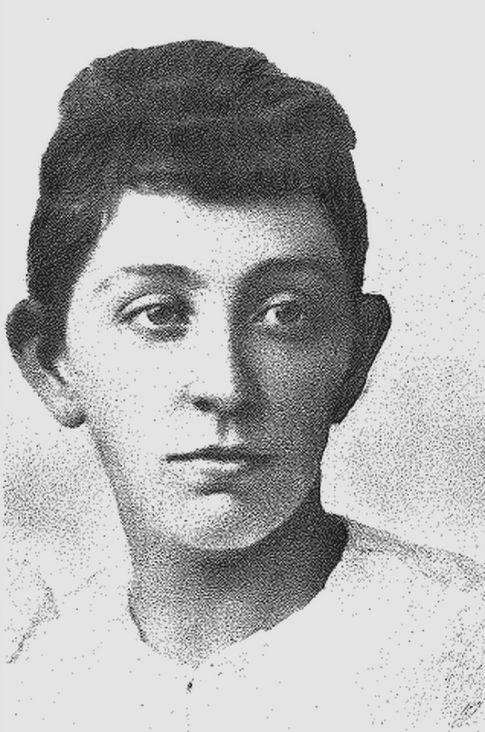
Adolf and Hanna (Hannchen) Simon, née Dettelbacher, lived for rent at Bahnhofstrasse 26 in Göppingen. Adolf and his brother Isidor ran a cattle business at Wühlestrasse 23. Selma (1893 – 1981) was the first of the couple’s four daughters and, as was customary in the Simon family, she received vocational training; she qualified as a secretary. Selma’s childhood was overshadowed by the early death of her mother in 1901. The relationship between Selma and her sisters and their stepmother Frieda, née Heumann, remained full of conflict.
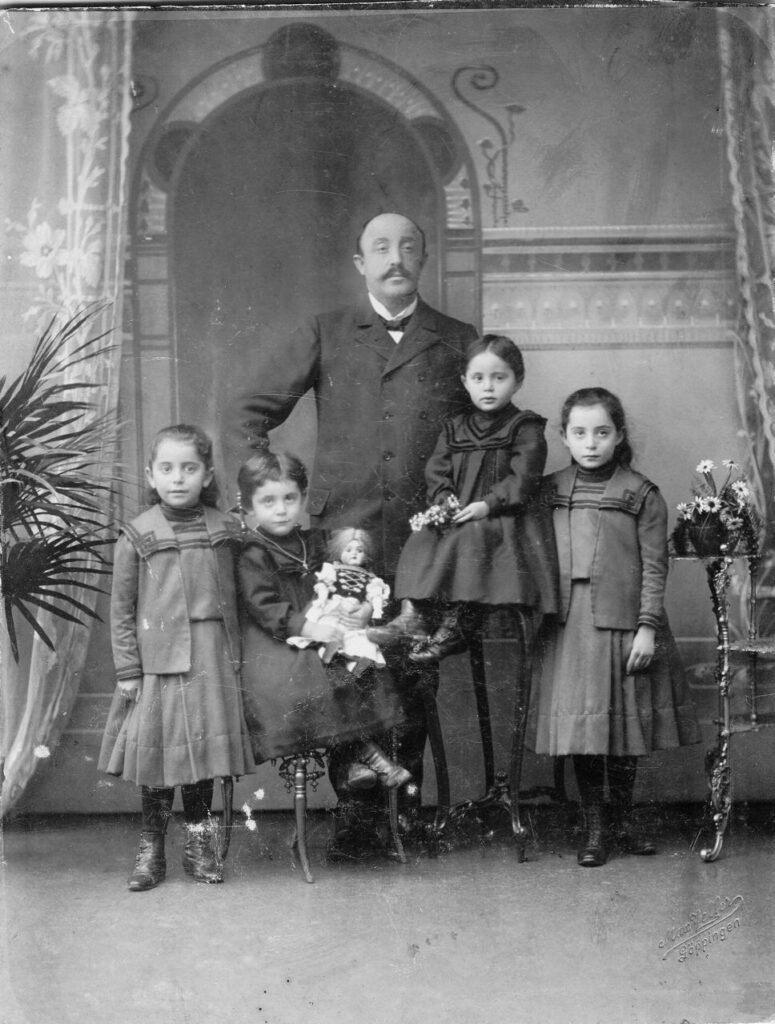
Frieda, Eugenie, Julie and Selma (from left)
Selma and Eugen Bernheimer
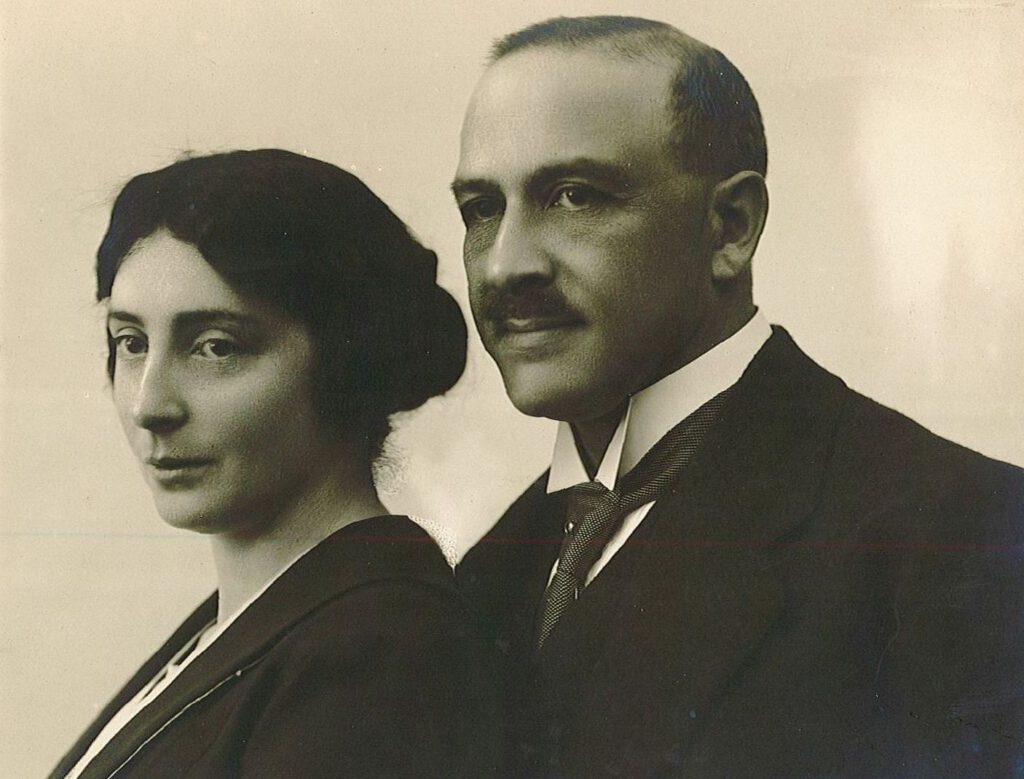
When Selma Simon married Eugen Bernheimer in 1920, he had already been successfully running the family business for ten years, and its products had become increasingly refined. Eugen Bernheimer had first attended secondary school and later, after gaining professional experience in his father’s business, trained as a master distiller. The most important product of the ‘Destillerie J. Bernheimer’ was the ‘Borato’ brandy.
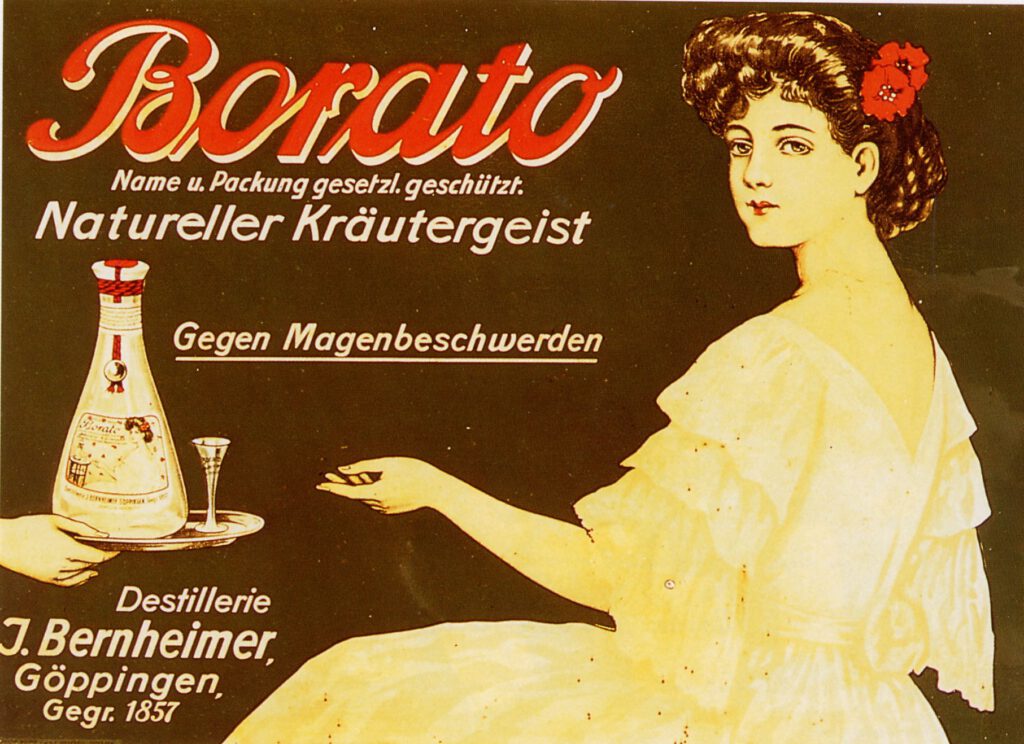
Apart from selling their own spirits to restaurants throughout southern Germany, a tobacco shop at Untere Marktstrasse 4, called ‘Havannahaus’, supplemented the family’s income.
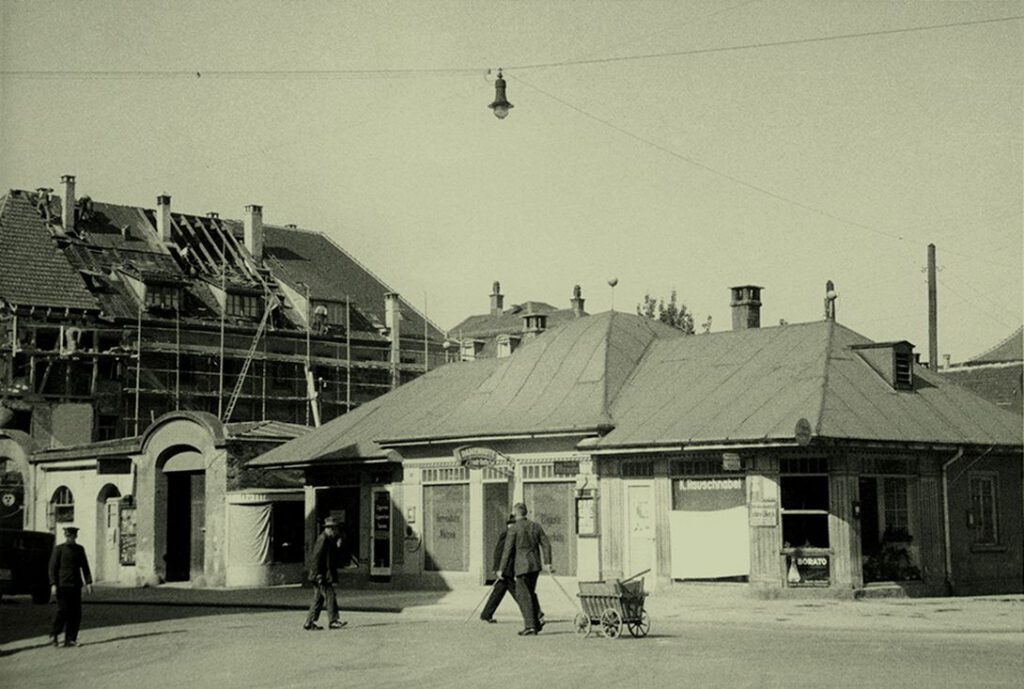
Even in the economically difficult times after the First World War, when Eugen had to serve as a soldier, the business remained successful. The Bernheimer couple were delighted with the birth of three daughters: Beate was born in 1921, Anneliese in 1922 and Margot in 1924.
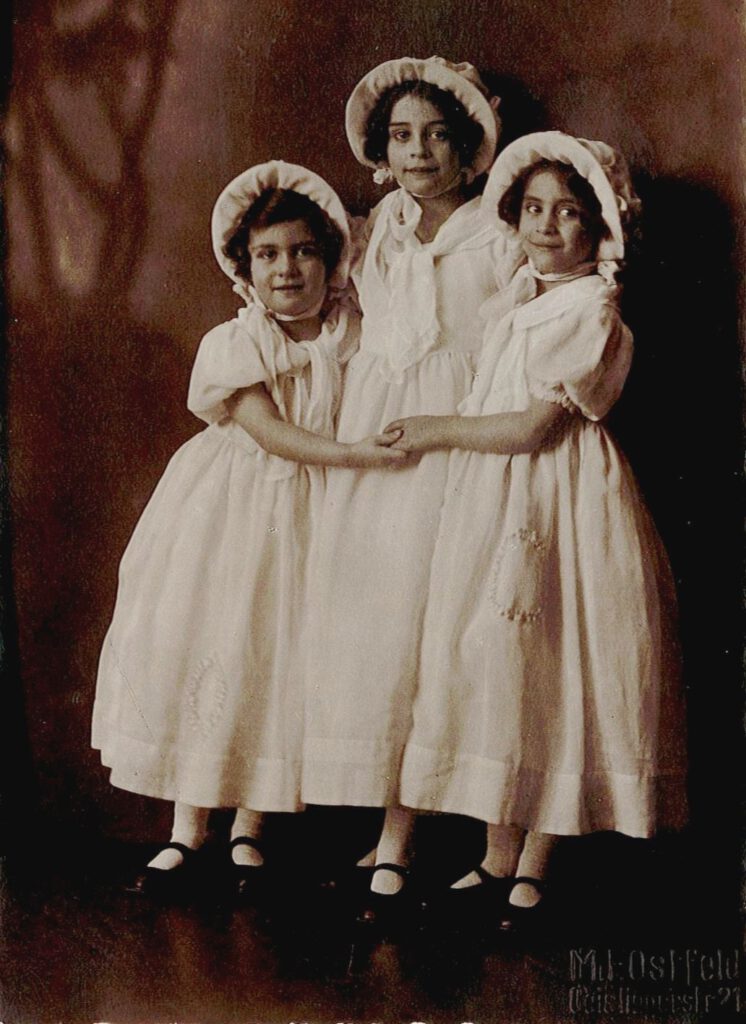
The management of the business was shared between the spouses, as Hans Mayer (see p. 13 below) has discovered:
“While a nanny soon took care of the daughters, Selma worked in the company, was entrusted with correspondence, order processing, bookkeeping support and, when her husband was absent, overseeing the two retail stores in Geislinger Straße and Marktstraße. Soon after her marriage, she was therefore granted sole power of attorney. (…) On average, the company had eight to ten employees in the 1920s.”
In Rabbi Aron Tänzer’s book on Jewish life in Jebenhausen and Göppingen, there is a note that Eugen Bernheimer had been a member of the board of the ‘Israelitischer Männer Unterstützung-Verein’ (i.e. Israelite Men’s Support Association) since July 1927. No further involvement of the family in the Jewish community is known.
From the lives of the three sisters
A highlight of the year for Jewish children was the Hanukkah celebration at the Hotel Dettelbacher, where plays they had written themselves were also performed. In the well-documented performance ‘Princess Forget-Me-Not’s Wedding’ from 1929, Beate Bernheimer took on the coveted role of Princess Forget-Me-Not, while her younger sister Anne had to make do with the role of a flower.
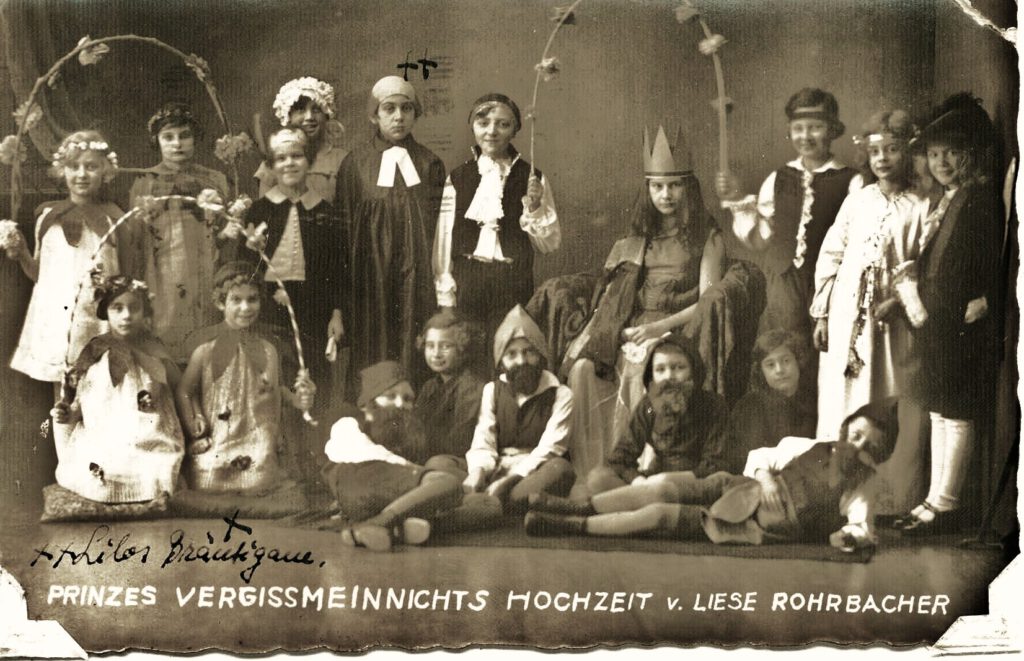
Anne Bernheimer kneeling (2nd from left), Beate Bernheimer standing (2nd from right)
In keeping with family tradition and the middle-class lifestyle, it was to be expected that the three Bernheimer daughters would receive a good education. The letter that Margot Karp, née Bernheimer, wrote to her former schoolmate Marianne Riedinger in 2015 confirms this:
“I can’t remember individual children or teachers in elementary school very well, but I have vivid memories of being scared every day during the four years that Mr. Bühler was our teacher. Among the few documents I still have, I found the report cards from the girls’ secondary school in Göppingen: On the first page it says ‘entered on April 23, 1935 in class Ib, left on November 9, 1938 from class IVb’. There is even a report for ‘Autumn 1938’ with a summary verdict ‘Is diligent and determined’. Most of the Jewish children who could no longer go to school attended the very modest school that the community maintained with a teacher and a few volunteers in the community center that was still standing after the destruction of the synagogue. I was one of them. My two older sisters had left Göppingen in the summer of 1938; they could no longer go to school after the eighth grade, and my mother’s brothers, who had gone to the USA during the Depression in the 1920s and were living in New York, had arranged for them to move to distant relatives in Ohio to finish their schooling. Beate was 17 and Anneliese 15.”
The Bernheimer family during the Nazi era
Margot Karp’s letter documents the consequences the Nazi dictatorship had for the family’s children. The repressive measures suffered by the family and their business had already begun in 1933, when a boycott of ‘Jewish’ businesses was called for on April 1. A photo shows two SA guards in front of the entrance to the ‘Havannahaus’.
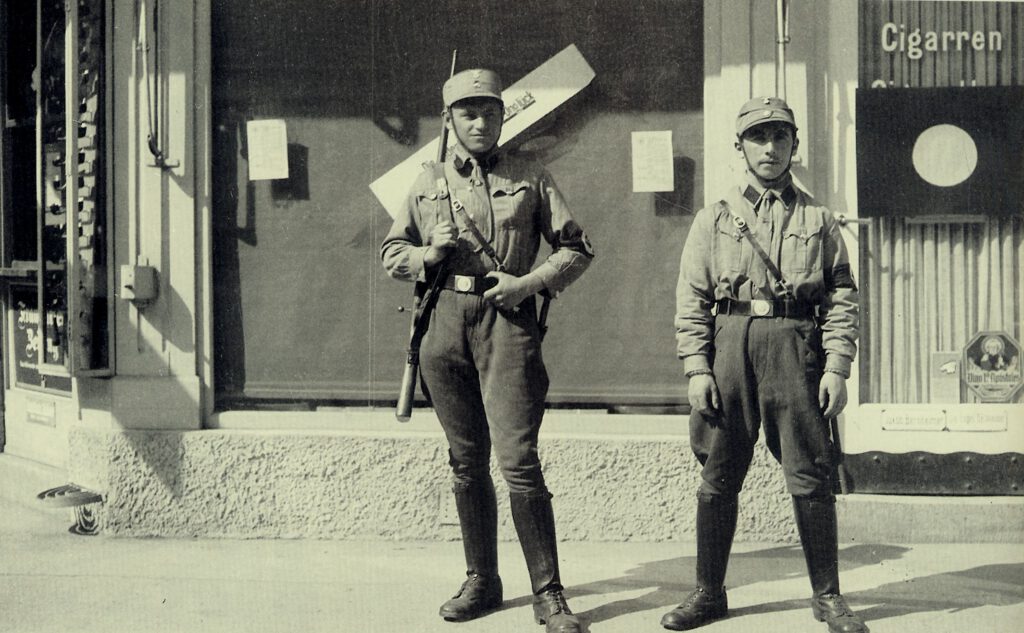
In 1935, the building was demolished by the city without Eugen Bernheimer being offered a replacement space. Over the next few years, the success of the business suffered under the constant harassment of the regime. The pogrom night of November 9/10, 1938 also became a horror for Eugen, Selma and Margot Bernheimer (the two older children were already abroad). Eugen Bernheimer was arrested and taken to Dachau concentration camp with 26 other men from Göppingen on November 12, where he was interned and humiliated until November 29. Margot Bernheimer, who had suffered the pogrom night as a 14-year-old, later described her experiences and feelings in an impressive way.
Imprisonment in Dachau concentration camp must have been traumatizing for Eugen Bernheimer, who had taken part in the First World War as a German soldier (‘Gefreiter’ = Private). Even in later years he was unable to talk about this terrible time.
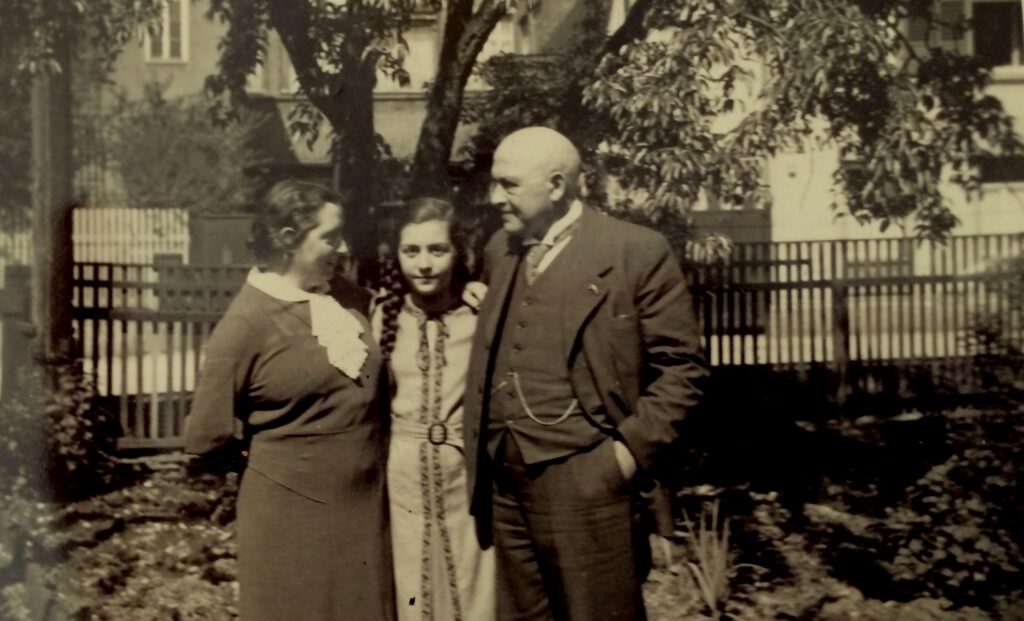
The forced sale of the company and the escape
With the internment of the Jewish men in the concentration camp, the Nazis also intended to force the owners of the business to sell it.
Eugen Bernheimer wrote in a restitution file after the war:
“One of the main interested parties was Erwin Riek, old PG (= party member of the NSDAP) with a golden party badge, then head of ‘Kraft durch Freude’ (i.e. ‘Strength through joy’ = National Socialist leisure organization) in Göppingen, a personal friend of the then Lord Mayor Pack. The party leadership then (…) arranged for me to be freed in order to carry out the so-called sale of my business and property. Anyone who came home from the concentration camp and wanted to avoid being interned again had no choice but to submit to the party’s coercion and hand over their property to the man the party had designated as the buyer. In my case, that was Erwin Riek. In my case, there could be no question of voluntariness, everything happened under duress.”
After paying various compulsory levies, the family had nothing left over from the proceeds of the sale, which had already been below value. On May 15, 1939, Selma, Eugen and Margot Bernheimer were able to flee to the USA/New York – the two older daughters had already been in the States since 1938. Margot Karp, née Bernheimer, recalled in 2013: “We were allowed to send furniture and clothes, but nothing of value, and each of us could only take 10 marks with us”.
The years in New York
The Bernheimer family was lucky enough to meet relatives in New York who had been living there since the 1920s: the refugee family was initially able to live with Selma’s half-brother Fred Simon. Eugen Bernheimer found work as a commercial clerk, and the two older daughters Anneliese and Beate were also able to contribute to the (meagre) family income. The youngest daughter Margot went back to school, but the family did not have the money to send her to university despite her good final grades. Eugen Bernheimer tried in vain to sell the ‘Borato’ recipe to an American spirits manufacturer.
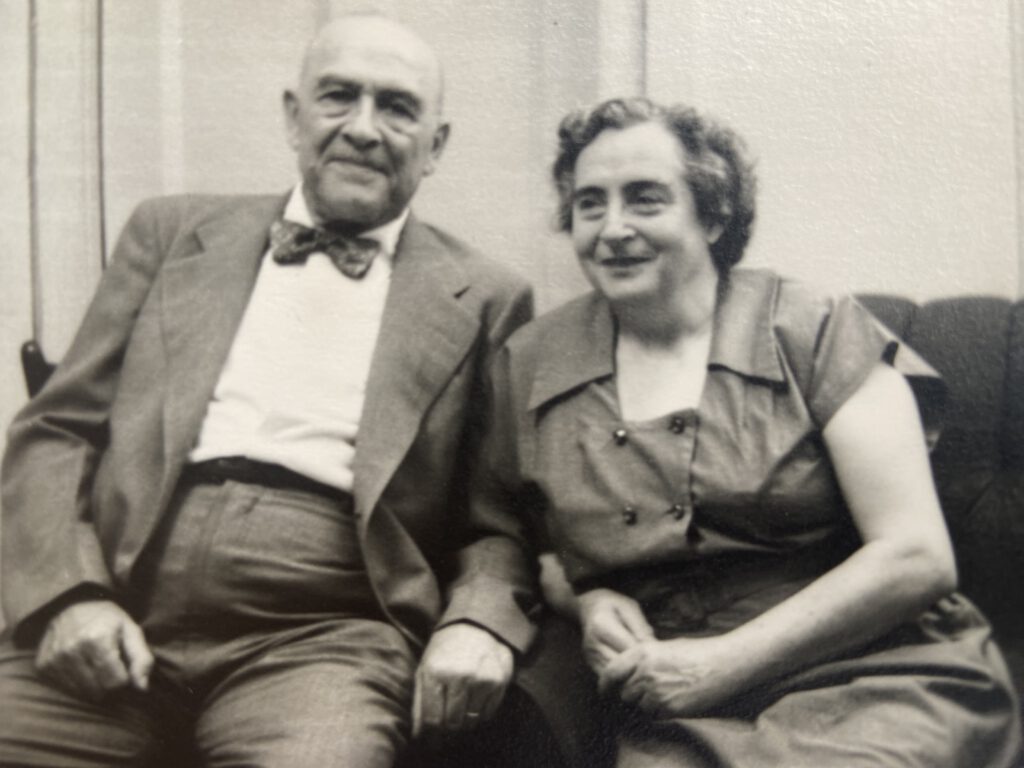
In 1945, Selma and Eugen Bernheimer were granted US citizenship and changed their surname to ‘Bernheim’. Anneliese, Beate and Margot Bernheimer learned professions, married and had children. Eugene Bernheim (Eugen Bernheimer) died in 1970, Selma in 1981. In the meantime, the three daughters have also died of old age.
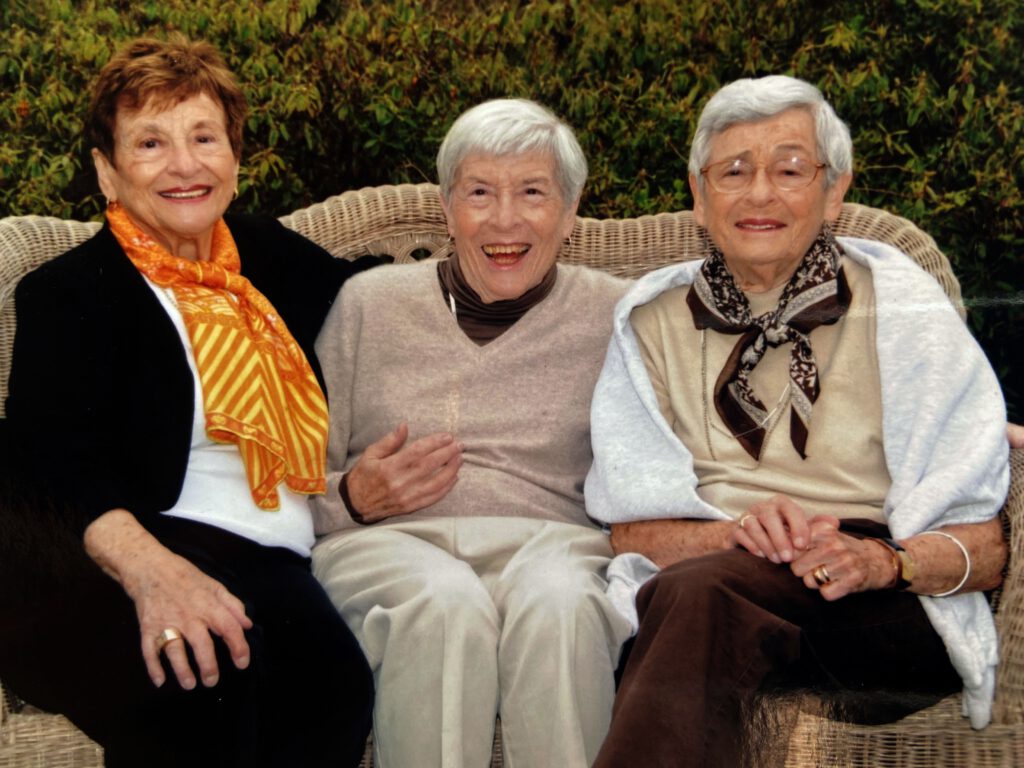
Bea Kandell, née Bernheimer in 2010 (from left)
The Stumbling Stones Initiative was in close contact with Margot Karp, née Bernheimer, and we have her to thank for important memories from her childhood and youth in Göppingen.
Restitution
Eugene Bernheim received his house at Geislinger Str. 3 back in 1949; however, there was hardly anything left of the warehouse and other goods. The devaluation of money following the currency reform meant that only a few thousand marks were returned to the robbed family. In 1952, Eugene Bernheim sold the house and land to the town of Göppingen, which had the house demolished in the 1970s.
Murdered relatives
Eugene Bernheimer’s older sisters Hermine Bernheimer and Rosa Frei, née Bernheimer, lived in Munich during the Nazi era. Both were deported to the Theresienstadt ghetto concentration camp in June 1942, where Hermine died on October 7, 1943 due to the murderous living conditions. Some time ago, a silver cup belonging to Hermine Bernheimer was identified. Her relatives donated the memento to the Jebenhausen Jewish Museum.
Rosa was lucky enough to be ransomed by Switzerland in February 1945. However, the 85-year-old, weakened by her imprisonment, died in Switzerland in May 1946.
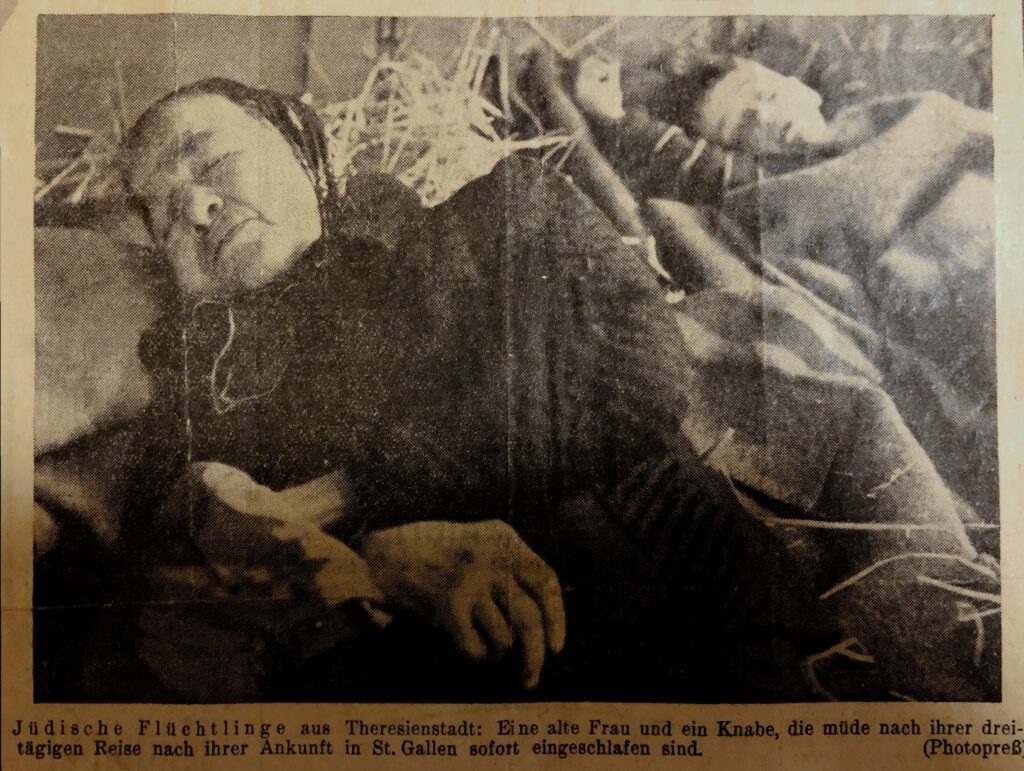

Rosa had married her brother-in-law Heinrich Frei, widower of her sister Leonore. His first marriage had produced seven children who lived in Munich. They were murdered in the Shoah: Arthur Frei and his wife Louise, née Wildberg, Frieda Ambrunn, née Frei, her husband Julius Ambrunn and their son Leonhard Ambrunn. Hedwig Frei, née Mayerson, the divorced wife of Alfred Frei, was also murdered.
There were also victims from the family of Selma Bernheimer, née Simon: her aunt (by marriage) Helene Simon, who lived in Göppingen , and her cousin Sofie Simon were murdered by the Nazi Germans, furthermore distant relatives from the Dettelbacher family.
On September 30, 2023, five stumbling stones were laid in Göppingen at the house at Geislinger Str. 2 for the Bernheimer family who had fled.
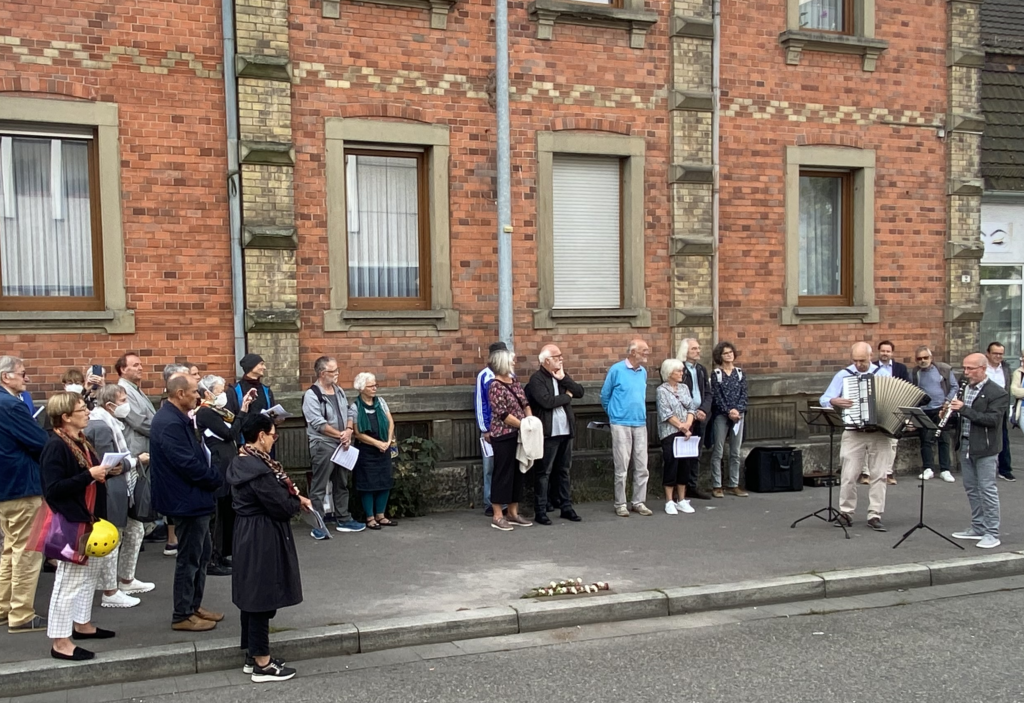
The ceremony was organized by cousins Ellen Kandell, Naomi Karp and Rachel Schwartz, whose speeches can be read here.
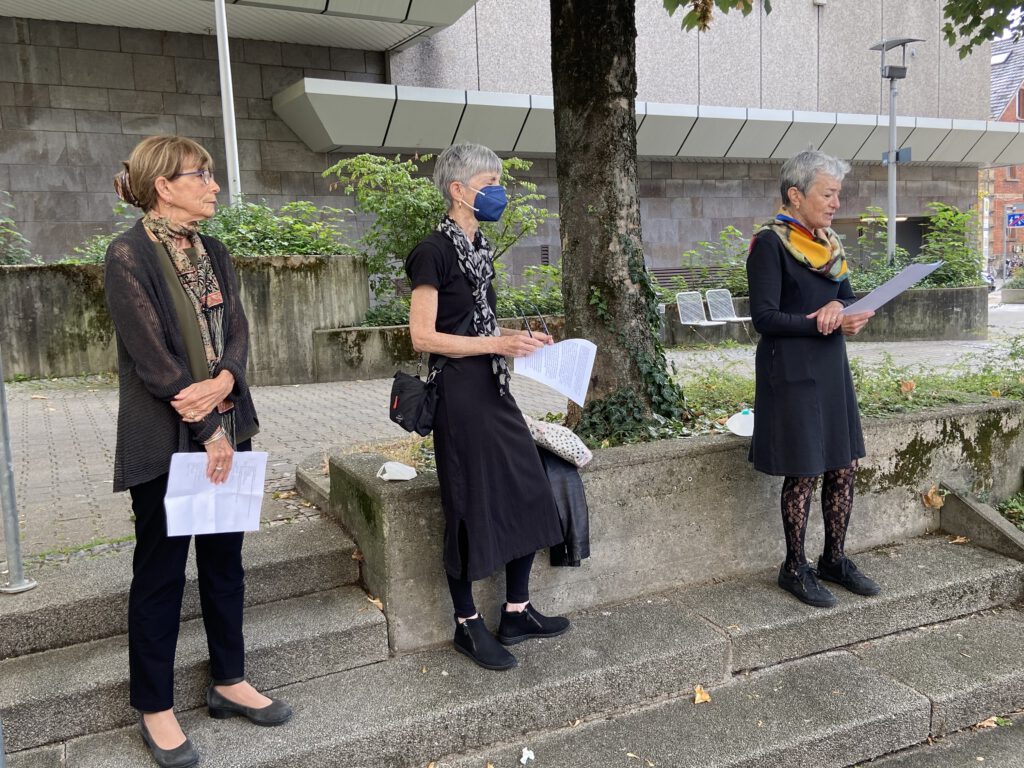
The Initiative Stolpersteine Göppingen e.V. would like to thank you for your trust and for the information and photos from the family.
Further information on the Bernheimer family and the spirits they produced can be found in the brochure by Hans Mayer: Die Firma Bernheimer und der Göppinger Kräutergeist “Borato” (ISBN 978-3-933844-68-2).
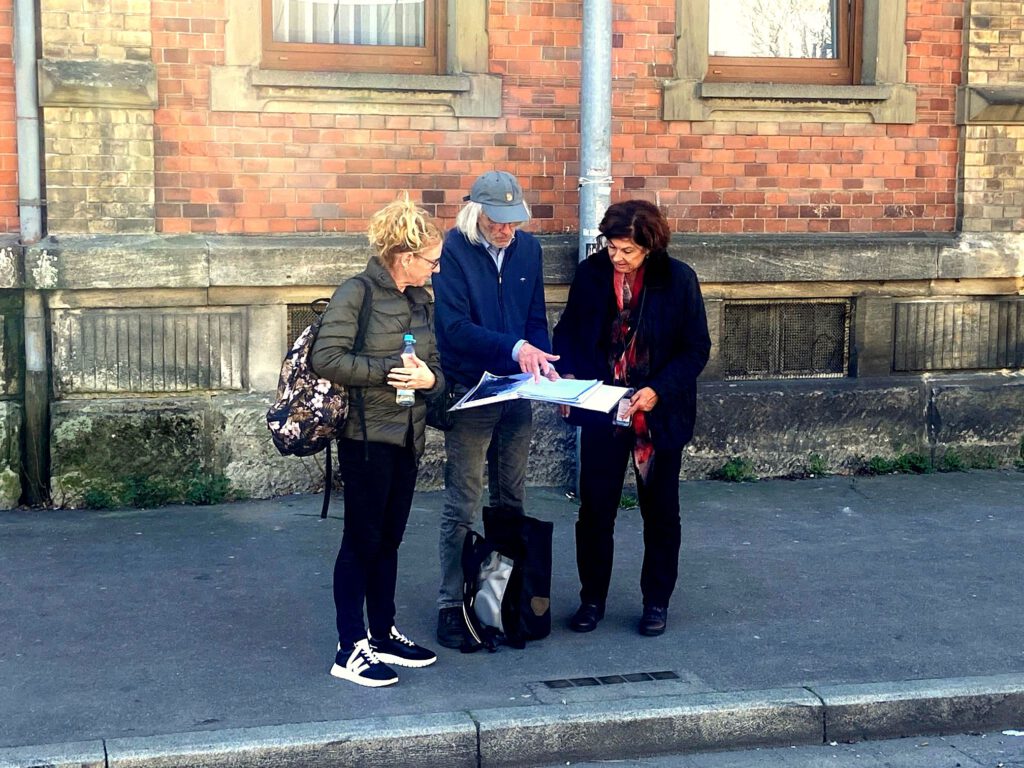
the Göppingen Stumbling Stones (in the center of the picture: Klaus Maier-Rubner)
(07.04.2025 kmr/ww)

